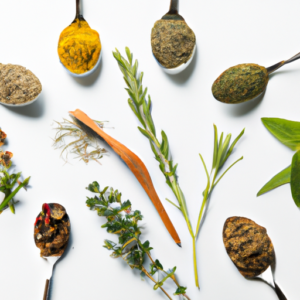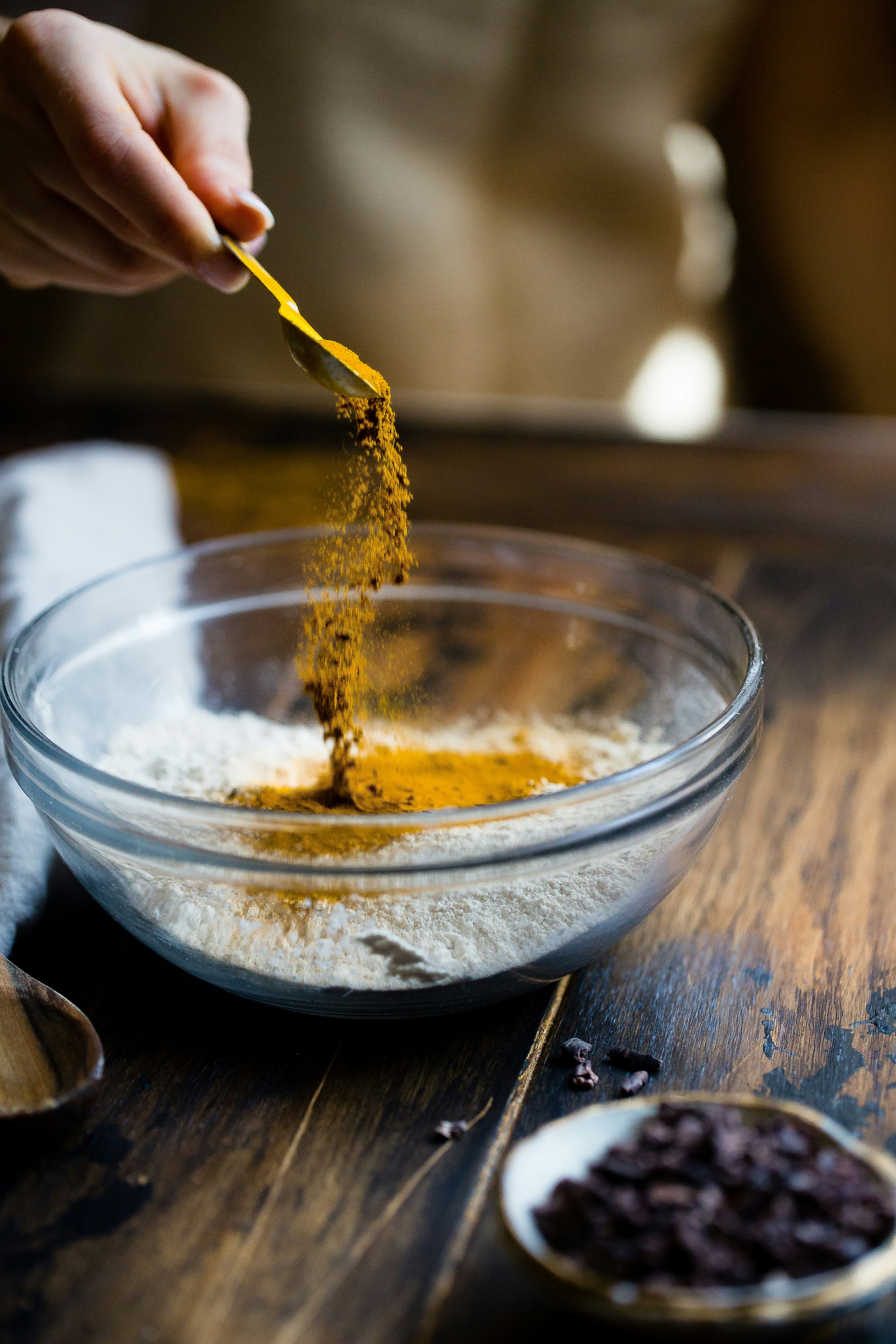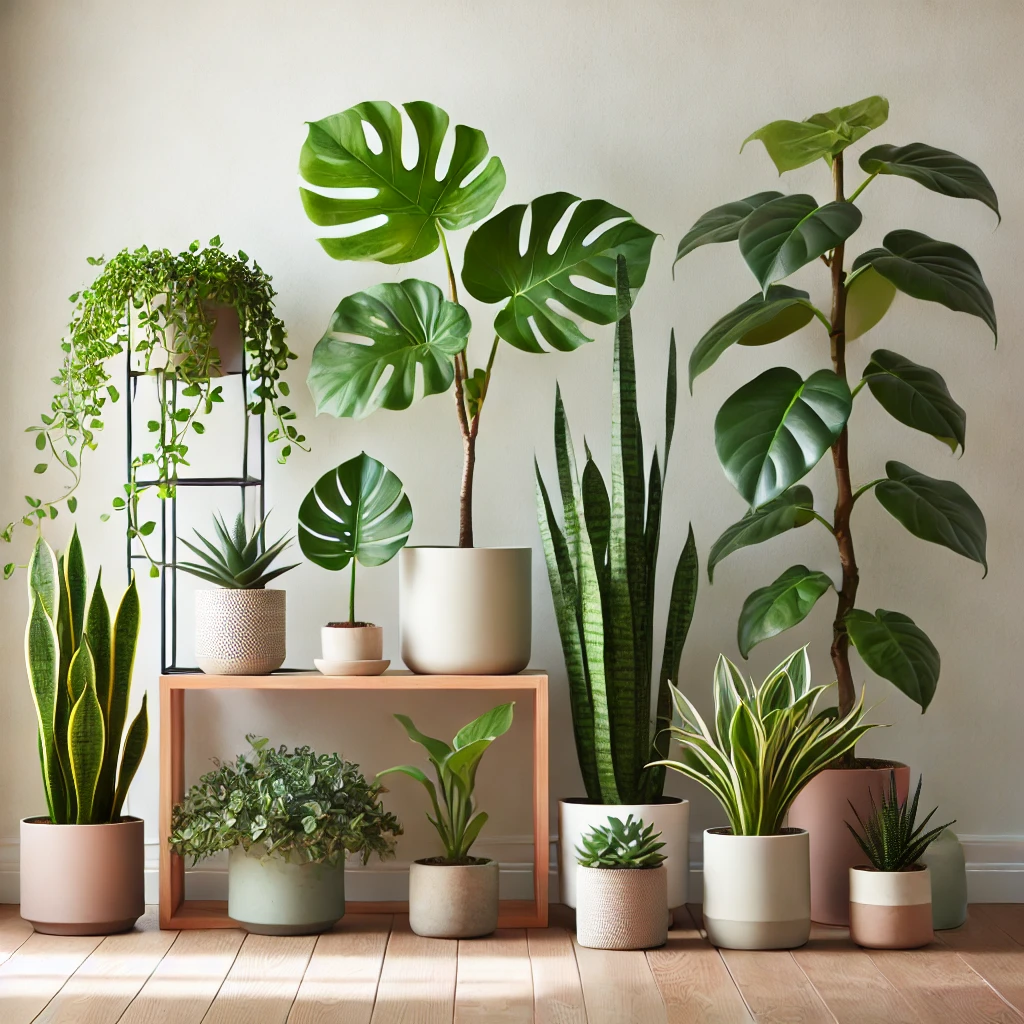Imagine transforming your everyday dishes into culinary masterpieces with just a sprinkle of magic. Introducing “Cooking with Fresh Herbs and Spices,” a delightful guide to elevating your cooking game to new heights. Bursting with flavors and aromas, this product is a treasure trove of knowledge that will turn your kitchen into a gourmet haven. Whether you’re a seasoned chef or a kitchen novice, this guide will take you on a flavorful journey, teaching you how to harness the power of herbs and spices to create dishes that will leave your taste buds begging for more. Get ready to tantalize your senses and unlock the secret to unforgettable meals with “Cooking with Fresh Herbs and Spices”!
Benefits of Cooking with Fresh Herbs and Spices
Enhances flavor
When it comes to cooking, flavor is everything. And what better way to add depth and complexity to your dishes than by using fresh herbs and spices? By incorporating these flavorful ingredients into your meals, you can elevate even the simplest of recipes to new heights. Fresh herbs like basil, cilantro, oregano, rosemary, and thyme bring a burst of vibrant and aromatic flavors to your dishes, making them more enjoyable and enticing to the taste buds.
Adds nutritional value
Cooking with fresh herbs and spices not only enhances the taste of your dishes but also adds a wealth of nutritional benefits. These natural flavor enhancers are packed with vitamins, minerals, and antioxidants that can support overall health and well-being. For example, herbs like basil and oregano are rich in vitamin K, which promotes healthy bones and blood clotting, while spices like turmeric and cinnamon have potent anti-inflammatory properties.
Reduces the need for salt and sugar
One of the major advantages of using fresh herbs and spices is that they can help reduce the need for excessive salt and sugar in your cooking. By enhancing the flavor of your dishes naturally, you can cut back on the use of these less healthy additives without sacrificing taste. This is especially beneficial for individuals who are watching their sodium intake or trying to limit their sugar consumption. So next time you’re seasoning your meals, consider reaching for a handful of fresh herbs or a sprinkle of aromatic spices instead.
Popular and Versatile Herbs for Cooking
Basil
Basil is a versatile herb that is widely used in Mediterranean and Italian cuisines. It has a sweet and slightly peppery flavor that pairs well with tomatoes, garlic, and cheese. Whether you’re making a classic Caprese salad, a fragrant pesto sauce, or a refreshing basil-infused lemonade, this herb is sure to add an irresistible burst of freshness to your dishes.
Cilantro
Cilantro, also known as coriander, is a herb with a distinct, citrusy flavor. Its leaves and stems are commonly used in Mexican, Indian, and Asian cuisines, adding a vibrant and aromatic touch to various dishes. From salsas and curries to stir-fries and soups, cilantro brings a unique and refreshing element to your culinary creations.
Oregano
Oregano is a staple herb in Mediterranean and Italian cooking. It has a warm and slightly bitter taste, making it a perfect complement to tomato-based dishes, roasted vegetables, and grilled meats. Whether you sprinkle it on top of a homemade pizza, mix it into a flavorful pasta sauce, or infuse it into olive oil for a tasty bread dip, oregano adds a delightful earthy flavor to your meals.
Rosemary
Rosemary is a fragrant and woody herb that adds a distinct and aromatic flavor to a wide range of recipes. With its robust and slightly pine-like taste, it pairs wonderfully with roasted meats, potatoes, and root vegetables. A sprig of rosemary in a roasted chicken, a sprinkle of minced rosemary on roasted potatoes, or a drizzle of rosemary-infused oil on a loaf of freshly baked bread can take your dishes to new heights.
Thyme
Thyme is a versatile herb that boasts a subtle yet distinct flavor. Its leaves are small and delicate yet pack a powerful aromatic punch. With its earthy and slightly minty taste, thyme is a fantastic addition to roasted vegetables, soups, stews, and marinades. Whether you use it to season a hearty beef stew or add a touch of elegance to a delicate seafood dish, thyme brings a delightful and comforting essence to any recipe.

Tips for Growing Your Own Herb Garden
Choose the right location
When it comes to growing your own herb garden, choosing the right location is key. Most herbs thrive in areas with ample sunlight, ideally receiving at least six hours of direct sunlight each day. Find a spot in your garden or balcony that gets plenty of sun and provides good air circulation. This will ensure that your herbs receive the optimal conditions needed for healthy growth.
Start with quality soil
To give your herbs the best chance of flourishing, start with quality soil. Herbs generally prefer well-draining soil, so consider adding organic matter such as compost or peat moss to improve the soil structure. Additionally, ensure that the soil has good moisture retention while allowing excess water to drain away, preventing the roots from becoming waterlogged.
Water and feed properly
Proper watering and feeding are essential for the health and vitality of your herb garden. Different herbs have varying water requirements, but as a general rule of thumb, water them when the top inch of soil feels dry to the touch. Be mindful not to overwater as this can lead to root rot. Additionally, regular feeding with a balanced organic fertilizer will provide your herbs with the nutrients they need to thrive.
Harvest herbs correctly
Knowing how to harvest your herbs correctly is crucial to promote healthy growth and ensure continuous production. Harvesting at the right time will also yield the best flavors. For leafy herbs like basil and cilantro, pinch off the outer leaves or cut the stems just above a pair of leaves. This encourages bushier growth. For herbs like rosemary and thyme, trim the stems with sharp scissors, cutting just above a set of leaves or a node. This will encourage new growth and maintain the plant’s shape.
Essential Spices for Every Kitchen
Cumin
Cumin is a highly aromatic spice with a warm and slightly nutty flavor. It is commonly used in cuisines such as Middle Eastern, Indian, and Mexican. This versatile spice can be used in both savory and sweet dishes, adding depth and complexity. From curries and soups to roasted vegetables and homemade spice blends, cumin brings a unique and earthy flavor to your culinary creations.
Turmeric
Turmeric is a vibrant yellow spice that is well-known for its numerous health benefits. It has a slightly bitter and peppery taste, adding a warm and earthy flavor to your dishes. Turmeric is commonly used in Indian and Southeast Asian cuisines and is often found in curry powders and spice blends. It can be used in a variety of recipes, from rice dishes and lentil soups to smoothies and golden milk lattes.
Paprika
Paprika is a spice made from dried and ground sweet or hot chili peppers. It adds a rich, smoky flavor and a vibrant red color to your dishes. Paprika is a key ingredient in Hungarian and Spanish cuisines, featuring prominently in dishes like goulash and paella. It can also be used as a garnish for deviled eggs, as a seasoning for roasted meats and vegetables, or as an ingredient in homemade spice rubs.
Cinnamon
Cinnamon is a warm and aromatic spice that is widely used in both sweet and savory dishes. It has a sweet and slightly woody flavor, adding a comforting and fragrant element to your recipes. From baked goods like cinnamon rolls and apple pies to savory dishes like Moroccan tagines and Indian biryanis, cinnamon brings a delightful warmth and complexity to a variety of culinary creations.
Ginger
Ginger is a versatile spice with a distinctive and slightly spicy flavor. It adds a zing and a subtle heat to dishes, making it a popular ingredient in Asian, Indian, and Middle Eastern cuisines. Whether you use it to add depth to stir-fries, to spice up curries, or to add a refreshing kick to beverages and desserts, ginger brings a unique and invigorating taste to your cooking.
Combining Herbs and Spices for Delicious Flavors
Understanding flavor profiles
When it comes to combining herbs and spices, understanding flavor profiles is essential. Certain herbs and spices pair exceptionally well together, while others may clash or overpower each other. For example, the robustness of rosemary pairs wonderfully with the earthiness of thyme and the warmth of paprika, while the freshness of cilantro complements the zing of ginger and the warmth of turmeric. Experimenting with different combinations will help you unlock a world of delicious flavors in your cooking.
Experimenting with different combinations
The beauty of cooking with herbs and spices lies in the endless possibilities for experimentation. Don’t be afraid to get creative and try out different combinations to find your own unique flavor profiles. Mix and match herbs and spices based on your personal preferences and the cuisines you love. Whether you’re blending a Mexican spice mix for your homemade tacos, creating an Italian herb blend for your pasta sauces, or concocting a fragrant Asian spice blend for stir-fries, the possibilities are truly endless.
Cooking Techniques with Fresh Herbs
Infusing oils and vinegars
One of the best ways to incorporate the flavors of fresh herbs into your cooking is by infusing oils and vinegars. This simple technique allows you to extract the essence of the herbs and create flavorful bases for dressings, marinades, and sauces. To infuse oils, heat the oil gently in a saucepan and add the herbs of your choice. Let it simmer for a few minutes, then strain out the herbs. For vinegars, simply place the herbs in a bottle and pour in the vinegar, allowing it to infuse for a week or two. The infused oils and vinegars can be used in a variety of dishes to add a burst of herbal goodness.
Blending into marinades and sauces
Fresh herbs can take your marinades and sauces to a whole new level, infusing them with vibrant flavors. Whether you’re marinating meats, fish, or even vegetables, adding a handful of minced herbs can elevate the taste and aroma of your dishes. The combination of herbs and spices in marinades creates a harmonious balance of flavors, enhancing the natural taste of the ingredients. Similarly, incorporating fresh herbs into your homemade sauces can add complexity and depth, turning a simple dish into a culinary masterpiece.

Making Homemade Herb Blends and Seasonings
Italian herb blend
An Italian herb blend is a fantastic staple to have in your kitchen. It typically consists of dried basil, oregano, thyme, rosemary, and parsley. This versatile blend adds a flavorful Mediterranean touch to your dishes. Use it to season pasta sauces, sprinkle it on pizzas, or rub it onto roasted chicken and vegetables. The combination of herbs creates a perfect balance of flavors, bringing an authentic taste of Italy to your meals.
Cajun seasoning
Cajun seasoning is a spicy and flavorful blend that originated from the Cajun cuisine of Louisiana. It typically includes a mix of spices like paprika, cayenne pepper, garlic powder, onion powder, and herbs like thyme and oregano. This bold blend adds a fiery kick to your dishes, whether you’re seasoning grilled meats, spicing up seafood boils, or adding depth to jambalaya. The Cajun seasoning brings a unique fusion of flavors that will transport your taste buds straight to the heart of the Bayou.
Mexican spice mix
A homemade Mexican spice mix is a must-have for anyone who loves the vibrant flavors of Mexican cuisine. It typically consists of spices like cumin, chili powder, paprika, garlic powder, onion powder, and dried oregano. This versatile blend can be used to season tacos, fajitas, enchiladas, or even beans and rice. Whether you’re creating a zesty salsa, a smoky chili, or a flavorful mole sauce, the Mexican spice mix adds the perfect amount of heat and depth to your dishes.
Storing and Preserving Fresh Herbs and Spices
Drying herbs
One of the easiest ways to preserve fresh herbs is by drying them. Dried herbs can be stored for a longer period and used whenever you need to add flavor to your dishes. To dry herbs, simply tie bunches of fresh herbs together, hang them upside down in a cool, dry place, and let them air dry. Once the herbs are fully dried, remove the leaves from the stems, crush or grind them, and store them in airtight containers. When using dried herbs, remember that their flavors are more concentrated, so you’ll need less compared to fresh herbs.
Freezing herbs
Freezing herbs is another great option for preserving their flavors and nutritional benefits. Simply wash and dry the herbs, chop them finely or leave them whole, and pack them into ice cube trays or freezer bags. Fill the trays or bags with water, oil, or broth, depending on your preference, and freeze them. The frozen herb cubes or bags can be easily added to soups, stews, sauces, and other dishes whenever you need a burst of freshness. Freezing herbs allows you to enjoy their flavors and health benefits even when they are out of season.
Proper spice storage
To maintain the freshness and potency of your spices, proper storage is crucial. Store your spices in airtight containers, away from heat, moisture, and light. Exposure to these elements can cause spices to lose their flavors more quickly. Avoid storing spices near the stove or in the refrigerator, as the heat and moisture can degrade their quality. It’s also a good idea to label your spice containers with the date of purchase or expiration to ensure that you’re using them at their best.

Herbs and Spices for Different Cuisines
Mediterranean
For Mediterranean dishes, herbs like basil, oregano, thyme, and rosemary are perfect choices. These herbs bring the flavors of the Mediterranean region to your plate, enhancing dishes like Greek salads, pasta sauces, and roasted vegetables.
Asian
Asian cuisine often features herbs and spices like cilantro, ginger, turmeric, and lemongrass. These ingredients add a burst of freshness, warmth, and complexity to dishes like stir-fries, curries, and soups.
Mexican
Mexican cuisine is known for its vibrant and bold flavors. Herbs and spices like cilantro, cumin, paprika, and chili powder are essential for dishes like tacos, enchiladas, and salsas, adding a zesty and spicy kick.
Indian
Indian cuisine is famous for its aromatic and spicy dishes. Herbs like cilantro, mint, and curry leaves, along with spices like cumin, turmeric, cardamom, and coriander, create the intricate flavors of Indian curries, biryanis, and masalas.
Adding Herbs and Spices to Everyday Dishes
Soups and stews
Herbs and spices are a fantastic addition to soups and stews, infusing them with incredible flavors. Whether you’re making a comforting chicken noodle soup, a hearty beef stew, or a spicy chili, adding herbs like thyme, rosemary, and bay leaves, along with spices like cumin, paprika, and chili powder, can transform an ordinary bowl of soup into a culinary delight.
Salads and dressings
Fresh herbs bring a burst of freshness and vibrancy to salads and dressings. Adding herbs like basil, cilantro, and dill to your salads can elevate their flavor and make them more enticing. When making dressings, consider incorporating herbs like parsley, chives, and tarragon, along with spices like garlic powder and mustard, to create a delicious homemade dressing that will take your salad to the next level.
Grilled meats and vegetables
Herbs and spices are excellent for enhancing the flavor of grilled meats and vegetables. Whether you’re grilling a juicy steak, a flavorful piece of fish, or a medley of vegetables, seasoning with herbs like rosemary, thyme, and cilantro, along with spices like cumin, paprika, and garlic powder, can elevate the taste and aroma of your grilled dishes. The combination of smoky flavors from the grill and the aromatic herbs and spices creates a mouthwatering experience.
Cooking with fresh herbs and spices not only adds tremendous flavor to your meals but also provides numerous health benefits. So go ahead and experiment with different combinations, create your own homemade herb blends and spice mixes, and unlock a world of delicious flavors in your everyday dishes. With a little creativity and a sprinkle of herbs and spices, you can transform even the simplest of recipes into culinary masterpieces. So get cooking, and enjoy the incredible taste and aroma that fresh herbs and spices bring to your culinary adventures!




